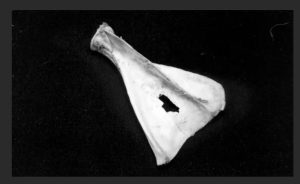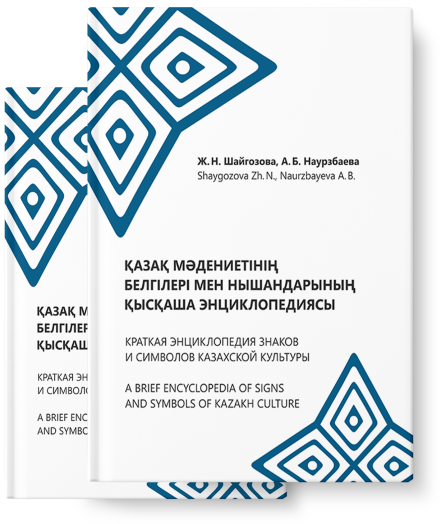
A short encyclopedia of
Signs and symbols of
Kazakh culture

The Kazakhs call the shoulder blade of a ram zhauyryn, and from this came the name of the ancient soothsayers on the blade – zhauyranshy. This kind of fortune telling is common among many peoples. M. Ch. Zhurtubaev [6] gives a detailed description of it, according to which they preferred to predict on the blade of a three-year-old sheep, heating the blade on a fire until it showed bright lines and cracks. According to Balkars and Karachais, the blade represented a three-part image of the world, each sector symbolising a particular area, and a prediction was made accordingly (by the lines and cracks, their colour).
This method of divination was widely used by the Mongols. The researchers L.G. Skorodumova and A.A. Solovyova describe: The speaker “looks” at the blade from different sides and not only expresses a wish, but also predicts good things for the family, the owner, etc. The wisher is then answered, “Whoever said a good wish to a shoulder blade – may he live more than seventy years, and the wishes he said may come true!” [17, p.58].
Interesting data on the semiotic meaning of a ram’s shoulder blade can be found in Buryat culture, where, according to A.A. Badmaev [3], it functions as a symbolic expression of a maternal family. The shoulder blade also played an important role in infant rituals when a child was first placed in a cradle. The ram’s shoulder blade also played an important role among the Ossetians; according to their beliefs, it is endowed with special magical powers and has the ability to indicate all upcoming changes in the life of society and the fate of a particular person.
According to the cultural historian Z. Naurzbayeva, among the Kazakhs there were two ways of divination: one by roasting on the fire, the other by the structure of the blade itself. The first method was also part of military magic and ritual and was used to predict the course of an upcoming campaign or battle. In addition, a ram’s shoulder blade was handed to a man who inquired about the condition of his married sister as a sign of respect.
The scope of the ram’s blade occurs in Kazakh and Turkic Mongolian culture as a whole is broad, ranging from divination – “translator” of the heavenly will – to its function as a talisman: the Kazakhs considered the leaf a sign of well-being and good fortune in the home, a symbol of protection and strength, and a sign of the respect it commanded.

